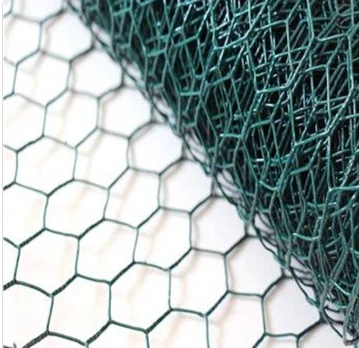
Dec . 11, 2024 02:25 Back to list
Versatile Applications of Welded Wire Mesh in Construction and Landscaping Projects
Understanding Welded Wire Netting Applications, Benefits, and Considerations
Welded wire netting, also known as welded wire mesh, is a type of wire fencing that has gained significant popularity across various industries and residential applications. Composed of rows and columns of wires that are welded together at intersections, this material presents a versatile and durable solution for numerous needs. Understanding its characteristics, benefits, and potential applications can help individuals and businesses make informed decisions regarding its use.
Characteristics of Welded Wire Netting
Welded wire netting is typically made from high-quality steel wire, which is known for its strength and durability. The wires are arranged in a grid pattern and are welded at their intersections, creating a robust and stable structure. This welding process endows the material with enhanced rigidity compared to other types of wire fencing, such as woven wire. The netting often comes in various gauges (thickness levels) and mesh sizes, allowing customization to fit specific needs.
In addition to steel, welded wire netting can also be constructed from stainless steel or galvanized wire. Galvanization involves coating the wire with zinc to prevent rust and enhance longevity, making it an ideal choice for outdoor applications. Depending on the application requirements, welded wire mesh can also be coated with PVC or other protective materials, offering additional corrosion resistance and aesthetic appeal.
Benefits of Welded Wire Netting
One of the primary advantages of welded wire netting is its strength. The welded intersections increase load-bearing capacity, making it suitable for structures that require a high degree of stability and security. This makes it ideal for securing livestock, protecting gardens from pests, or creating barriers for construction sites.
Another benefit is the ease of installation. Welded wire netting is lightweight compared to traditional fencing materials such as wood or brick, which simplifies transportation and handling. Additionally, it can be easily cut to desired lengths, with standard sizes available, which streamlines the installation process.
Welded wire netting also provides excellent visibility and airflow. Unlike solid fencing materials that can create a sense of enclosure, welded wire mesh allows light and air to pass through, making it a popular choice for greenhouses and animal enclosures. This feature is particularly beneficial when maintaining a comfortable environment for plants or animals, ensuring that they receive adequate ventilation.
Moreover, welded wire netting is low maintenance
. Its durable materials resist rust and deterioration, especially when galvanized. Regular checks for integrity and any necessary repairs typically suffice for maintaining the fencing's functionality over time, reducing overall upkeep costs.welded wire netting

Applications of Welded Wire Netting
The versatility of welded wire netting lends itself to various applications across multiple industries. One of the most common uses is in agricultural settings, where it is employed to create secure enclosures for livestock, poultry, and other animals. Farmers also use it to protect crops from wildlife, preventing damage and loss.
In construction, welded wire mesh is frequently used as reinforcement in concrete structures. It adds strength and stability to concrete slabs, walls, and other load-bearing components, enhancing the overall integrity of buildings.
Welded wire netting finds its place in residential applications as well. Homeowners utilize it for fencing around gardens, pools, or yards, providing a balance between security and aesthetic appeal. Additionally, it serves as a robust framework for trellises or climbing plants, contributing to landscape design.
Furthermore, welded wire mesh is used in various industrial applications, including manufacturing and storage. It can be employed to create safety barriers, storage cages, or shelving systems, ensuring that goods are secure while maintaining visibility.
Considerations When Using Welded Wire Netting
While welded wire netting presents numerous advantages, there are some considerations to keep in mind. The thickness of the wire and the size of the mesh openings should be chosen based on the specific application requirements. For example, larger openings may not deter small animals, while thinner wires may not withstand the pressure from larger species.
Additionally, proper installation is crucial for maximizing the benefits of welded wire netting. Ensuring that the panels are securely anchored and that the welds are intact can prevent issues related to strength and durability.
Conclusion
Welded wire netting is a versatile, durable, and practical solution suitable for a wide range of applications. Its strength, ease of maintenance, and low-cost advantages make it a popular choice for agricultural, industrial, and residential uses. By understanding its characteristics and potential applications, individuals and businesses can leverage welded wire netting to meet their specific needs effectively.
-
Why a Chain Link Fence is the Right Choice
NewsJul.09,2025
-
Upgrade Your Fencing with High-Quality Coated Chicken Wire
NewsJul.09,2025
-
The Power of Fence Post Spikes
NewsJul.09,2025
-
The Best Pet Enclosures for Every Need
NewsJul.09,2025
-
Secure Your Property with Premium Barbed Wire Solutions
NewsJul.09,2025
-
Enhance Your Construction Projects with Quality Gabion Boxes
NewsJul.09,2025
Products categories











